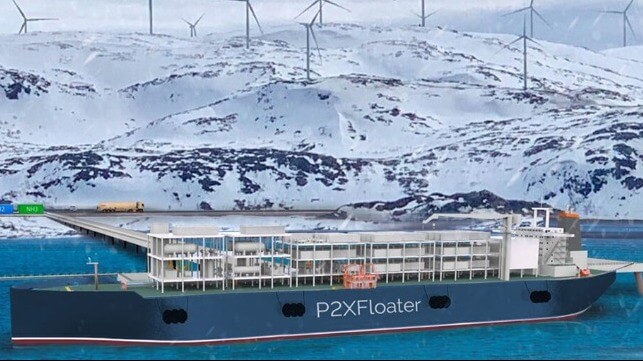Green Ammonia FPSO to be Powered by Greenland’s First Wind Farm

Norwegian startup company H2Carrier which looks to use floating production concepts similar to the oil and gas sector to produce green ammonia announced plans to deploy its first vessel powered by Greenland’s first commercial wind farm. H2Carrier signed a letter of intent with Greenland-based Anori for the development of the wind farm and subsequent production and export of green ammonia.
"By building on established and proven technologies with a strong safety track record from oil and gas we have developed zero carbon solutions for ammonia,” said Mårten Lunde, CEO of H2Carrier. “Greenland is uniquely positioned to take a leading role internationally for the supply of green ammonia and locally, a significant industrial project of this magnitude will be important to the Greenland society by way of employment opportunities and positive economic impact."
H2Carrier and Anori look to develop the first commercial wind farm in Greenland. The project, which would produce 1.5GW of renewable energy, would be used to supply power to H2Carrier’s floating production vessel for hydrogen and green ammonia, the P2XFloater. The green ammonia would be stored in tanks onboard the vessel, then exported on smaller ships and carried to the international market for ammonia.
According to Palle Christiansen, CEO of Anori, Greenland is ideally suited for the project as it offers attractive wind resources and ample access to clean water required for the operation of the floating production vessel. In addition, there is ample space to build the wind farm without concerns about competing for space with other projects.
H2Carrier earlier in 2022 detailed its proprietary design for a vessel that will produce, store, and export green ammonia, the P2XFloater. The design has been developed in close cooperation with leading engineering firms in Norway drawing on the principles of FPSOs common in the oil and gas sector. H2Carrier plans to build, own/lease, and operate a fleet of P2XFloaters based around a life extension of existing Very Large Gas Carriers (VLGC). They would develop control systems that optimize renewable power, electrolyzes, and the Haber-Bosch process for the production of ammonia.
Like an FPSO, the P2XFloater is designed to operate independently offshore. The vessel would include a mechanical arm and hose system to allow the transfer of liquid ammonia to another vessel without a pier or other infrastructure. Affirming the technical feasibility of the design, DNV issued an Approval in Principle (AiP) for the design in August 2022.
Under the design concept, the converted VLGCs would produce green hydrogen by pumping onboard seawater from the ocean, purifying it, and feeding it to electrolyzers. The green hydrogen is then combined with nitrogen extracted from the air and synthesized in an ammonia generator to produce green ammonia.
"At present, less than one percent of the ammonia consumption globally is produced from renewable energy,” said Nicolai Fossar Fabritius, the Chairman of Anori. “We need to turn this around to come closer to 100 percent as soon as possible to reach the targets of the Paris agreement."
H2Carrier believes its concept represents a cost and time-efficient and flexible solution for the production of green ammonia on an industrial scale at a competitive price.
